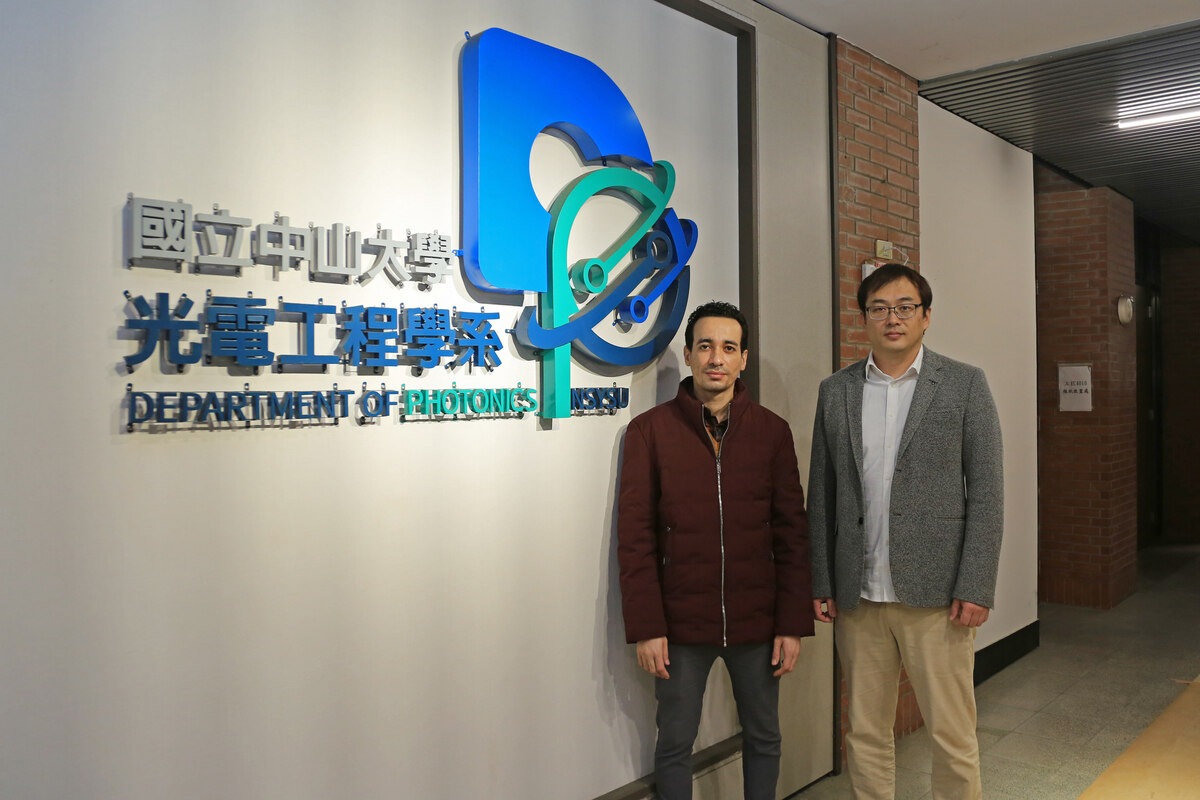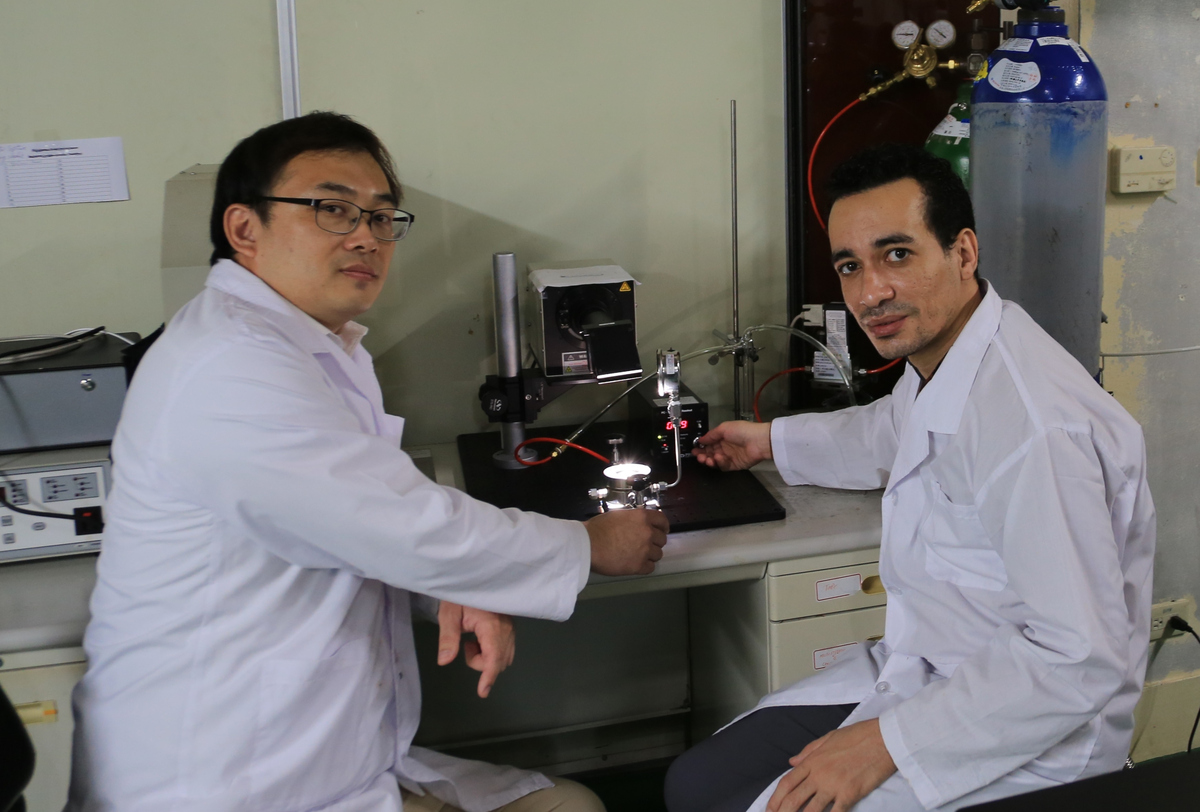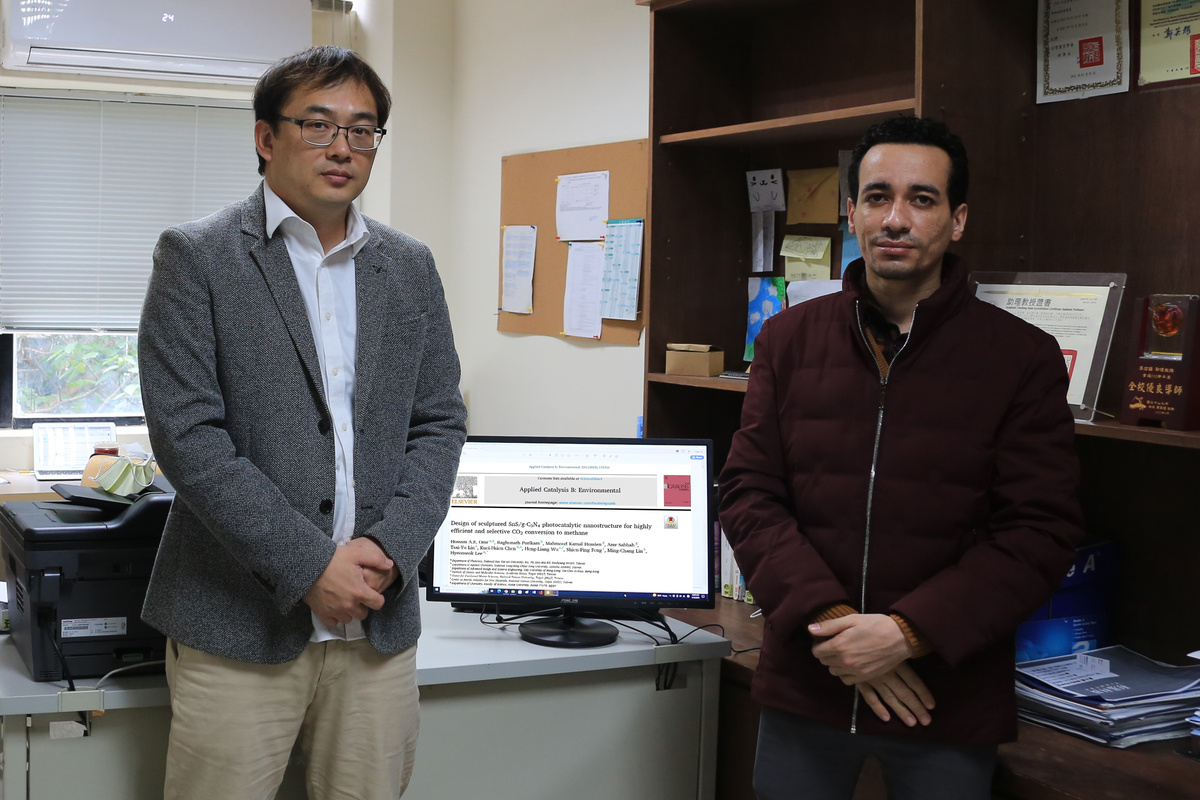Hyeonseok Lee, an assistant professor in the Department of Photonics at National Sun Yat-sen University, has made a breakthrough in the research of nanostructured photocatalysts. His latest research experiment uses a tin sulfide (SnS)/graphitic carbon nitride (g-C3N4) nanostructured photocatalyst to convert carbon dioxide (CO2) into methane (CH4), which overcomes the limitations of bulk SnS-based photocatalysts. “The current semiconductor industry infrastructure is well compatible with this fabrication technique and could be applied to a large scale,” Hyeonseok Lee mentioned. This research is expected to relieve the pressure of rising fossil fuel prices and slow down global warming. This research was published in one of the top international journals — “Applied Catalysis B: Environmental.”
Prof. Hyeonseok Lee leads the “Nano Energy and Interface Laboratory” with his Ph.D. student, Hossam A. E. Omr to study light energy conversion applications, especially photocatalysis systems and nanostructured materials fabrication, in an attempt to develop earth-abundant, non-toxic, and highly efficient light absorbing materials. This research includes the combination of nanostructured materials, fabricating nanostructured SnS/g-C3N4 nanocomposite film by a sculptured thin films (STFs) technique, and a simple dipping method. The SnS/g-C3N4 nanostructured photocatalysts perform an excellent 100% selective methane production rate by the SnS/g-C3N4 photocatalysts with more than 10 hours of stable operation. The highly improved performance is attributed to the synergistic effect caused by the formation of nanostructured SnS/g-C3N4 heterojunction. This device exhibits numerous excellent performances, such as superior light absorption, higher crystallinity, Z-scheme charge transport via C-S bonding, and excellent physiochemical properties of the SnS nanostructure surfaces.
Prof. Lee pointed out that the photocatalytic CO2 conversion technology dates back to 1978. Scientists and engineers paid attention to developing this technology including the design of new materials or/and improving the current materials. Nevertheless, the efficiency and selectivity for the production of desired fuel from CO2 by this technology are still great challenges. This research has combined the conventional photocatalyst named graphitic carbon nitride (g-C3N4) with tin (II) sulfide (SnS) to convert CO2 into CH4 with the highest production rate among metal sulfide-based catalysts.
This fabricated photocatalyst achieved the greatest production rates with 100% selectivity toward CH4 production from CO2 compared to other reported photocatalysts. This fabricated catalyst overcomes the limitation of the CO2 reduction reaction. The fabrication route of this photocatalyst is easy, safe, and eco-friendly compared to previously reported methods. The fabricated nanostructured photocatalyst converts CO2 into CH4 with high stability and recyclability. With global warming and severe environmental changes context, this work aimed to reduce the amount of CO2 in the atmosphere together with providing clean and renewable fuels for daily life. If this practical CO2 conversion technique can be widely used in the industry, this technique will be a realized solution for reducing carbon emissions and fulfilling the SDGs concept of environmental energy, contributing to sustainable development in the future.
According to Prof. Hyeonseok Lee, this research provides a profound understanding of related fields of nanostructured photocatalysts and their systematic reactions for high-efficiency CO2 conversion. This SnS/g-C3N4 nanostructured photocatalyst has the highest production rate among photocatalytic thin films and metal sulfide/g-C3N4 composite-based photocatalysts. This new research can be applied to convert CO2 produced by the industry in the future, which provides an effective solution for environmental problems. The team will also continue to develop related research about sculptured thin film technology to improve the intrinsic properties of the semiconductor named SnO2 and try to increase the best quantum efficiency upon incident solar energy.
[Appendix]
“Applied Catalysis B: Environmental” is an international top journal, and its 2021 Journal Impact Factor is 24.319. According to the Journal Impact Factor, its percentile is 99.07 in the category of engineering-environmental, ranking 1st among 54 journals. According to the Journal Citation Indicator, its percentile is 99.30 in the category of engineering-environmental, ranking 1st among 71 journals.
Journal article online link:
https://www.sciencedirect.com/science/article/pii/S0926337322011729




